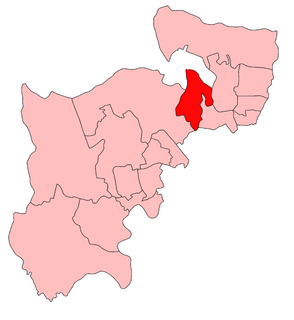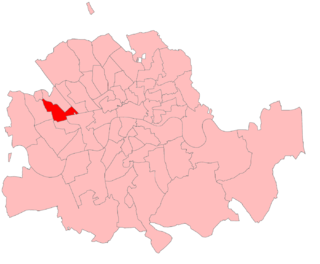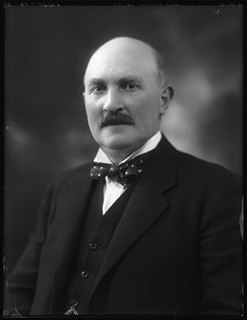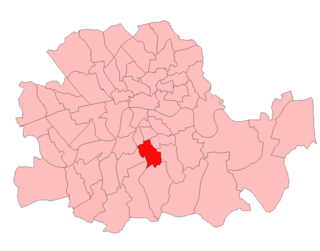
Finchley was a constituency represented in the House of Commons of the Parliament of the United Kingdom. It elected one Member of Parliament (MP) by the first past the post system of election; its best-known MP was Margaret Thatcher, Prime Minister from 1979 to 1990. Although boundary changes meant that she never again attained her large majority of 1959, she was nonetheless returned by comfortable (9,000) majorities at General Elections throughout her premiership.

Paddington South was a Parliamentary constituency in London which returned one Member of Parliament. It was a compact urban area, but predominantly wealthy, and was most famously represented by Lord Randolph Churchill during the latter part of his career.
Burslem was a borough constituency in Stoke-on-Trent which returned one Member of Parliament (MP) to the House of Commons of the Parliament of the United Kingdom. Elections were held using the first past the post voting system.
Kingston or Kingston-upon-Thames was a parliamentary constituency which covered the emerging southwest, outer London suburb of Kingston upon Thames and which existed between 1885 and 1997 and returned one Member of Parliament (MP) to the House of Commons of the UK Parliament. The Conservative candidate won each election during its 112-year existence.

Bethnal Green North East was a parliamentary constituency in London, which returned one Member of Parliament to the House of Commons of the Parliament of the United Kingdom. It was created for the 1885 general election and abolished for the 1950 general election

Enfield was a constituency for the House of Commons of the UK Parliament 1885 — 1950. The area sloping to the River Lea in the east was in the far north of Middlesex centred on the town of Enfield. The area formed part of the London conurbation and was much reduced over the course of its existence, in 1918 and then insignificantly in 1945 due to suburbanisation and urbanisation. It returned one Member of Parliament (MP).
The Darwen by-election, 1943 was a by-election held on 15 December 1943 for the British House of Commons constituency of Darwen in Lancashire.
The Neath by-election, 1945, was a parliamentary by-election held for the British House of Commons constituency of Neath in South Wales.

The Bodmin by-election, 1922 was a parliamentary by-election for the British House of Commons. The constituency of Bodmin in Cornwall polled on 24 February 1922. The by-election was notable for the opposition Liberal Party gaining a seat from the Coalition supporting Conservative Party.

Thomas Atholl Robertson was a Scottish fine arts printer and publisher and Liberal politician.
The Holderness by-election, 1939 was a parliamentary by-election held on 15 February 1939 for the British House of Commons constituency of Holderness in the East Riding of Yorkshire.
The Batley and Morley by-election, 1939 was a parliamentary by-election held in the United Kingdom on 9 March 1939 for the House of Commons constituency of Batley and Morley in the West Riding of Yorkshire.

The Anglesey by-election, 1923 was a parliamentary by-election for the British House of Commons constituency of Anglesey on 7 April 1923.
The Tavistock by-election, 1929 was a parliamentary by-election for the British House of Commons constituency of Tavistock on 11 October 1928.
The Wallasey by-election, 1942 was a parliamentary by-election for the British House of Commons constituency of Wallasey on 29 April 1942.
The Brecon and Radnorshire by-election, 1939, was a parliamentary by-election held on 1 August 1939 for the British House of Commons constituency of Brecon and Radnorshire, in South Wales.
The Daventry by-election, 1943 was a parliamentary by-election for the British House of Commons constituency of Daventry, Northamptonshire on 20 April 1943.
The Skipton by-election, 1944 was a parliamentary by-election for the British House of Commons constituency of Skipton, Yorkshire held on 7 January 1944.

The 1923 Whitechapel and St Georges by-election was a parliamentary by-election for the British House of Commons constituency of Whitechapel and St Georges on 8 February 1923.

The Camberwell North West by-election, 1920 was a parliamentary by-election held for the British House of Commons constituency of Camberwell North West in the South London district of Camberwell on 31 March 1920.















